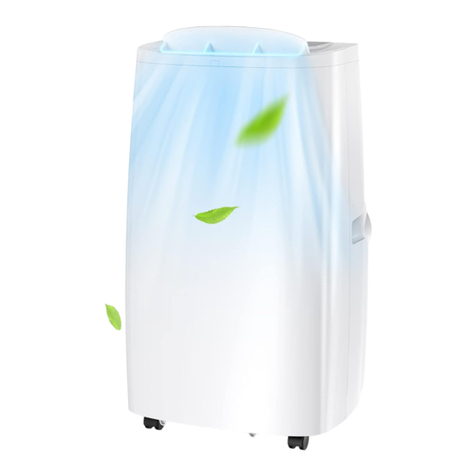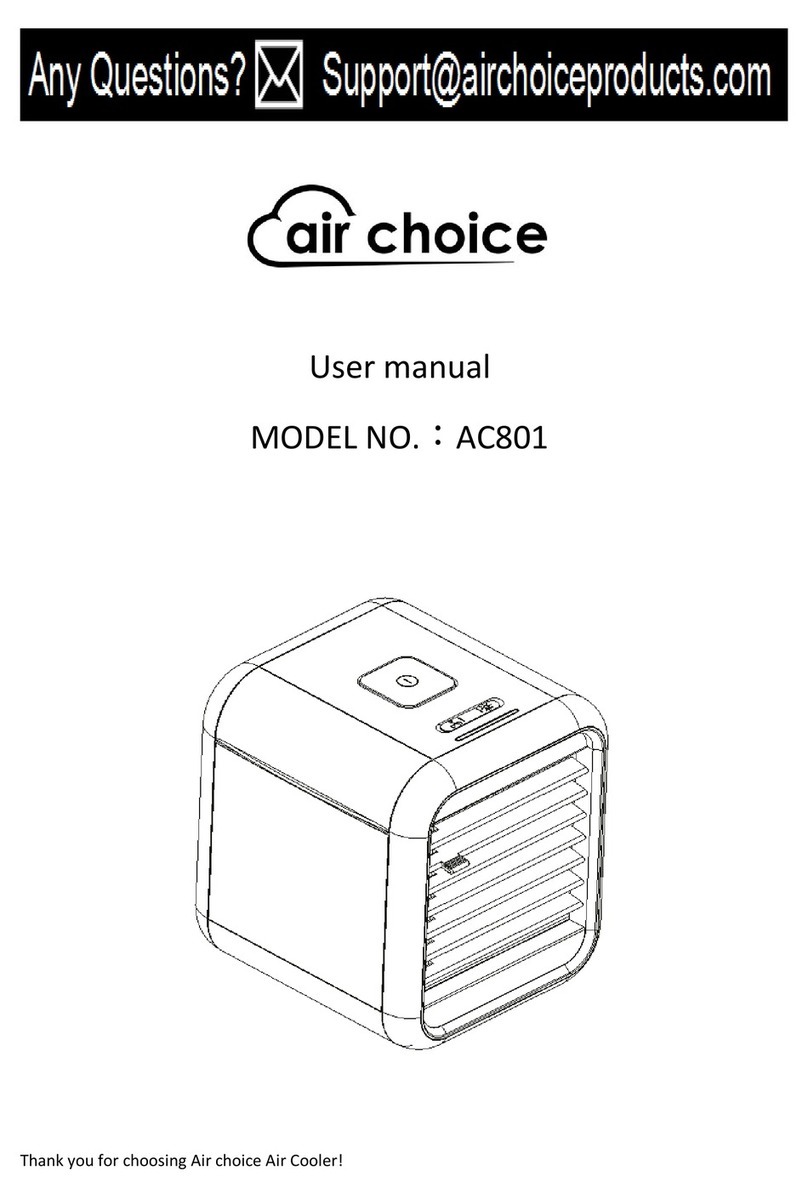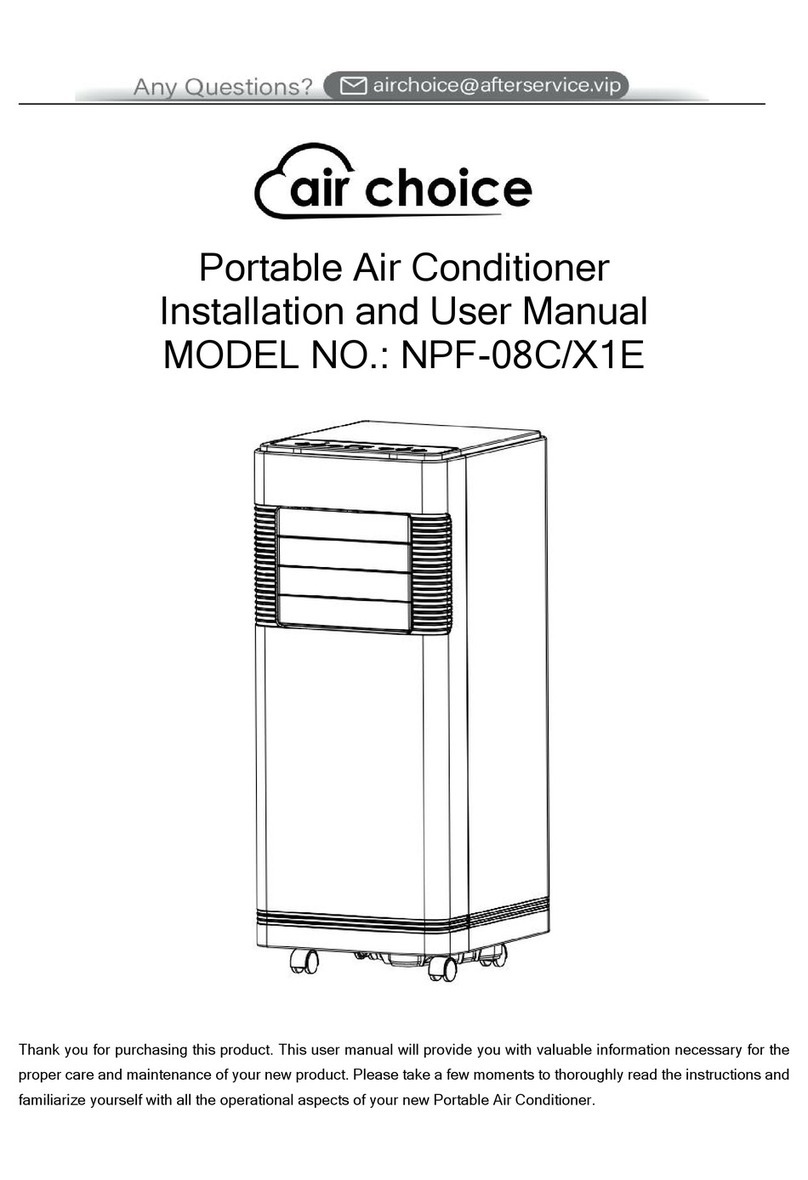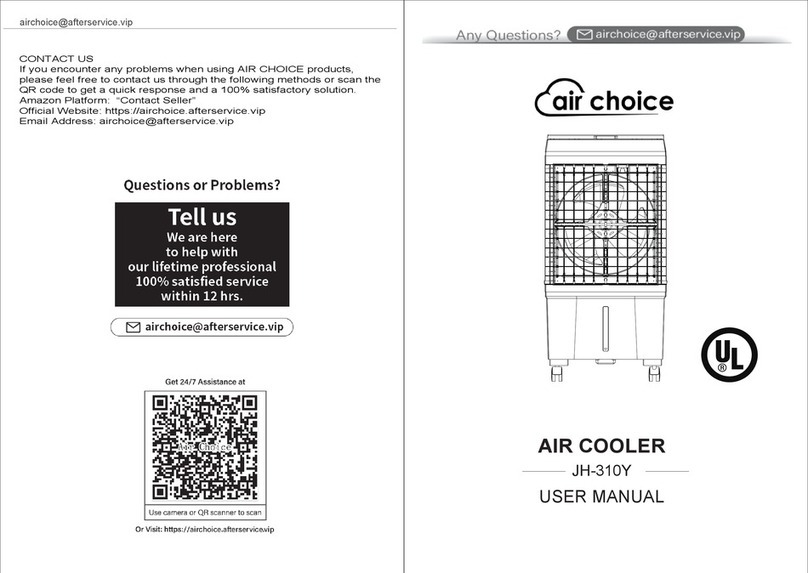sensorielles ou mentales réduites s'ils ont reçu une supervision ou des instructions concernant l'utilisation de
l'appareil en toute sécurité et comprennent les risques encourus. Les enfants ne doivent pas jouer avec l'appareil. Le
nettoyage et l'entretien ne doivent pas être effectués par des enfants sans surveillance.
Cet appareil n'est pas destiné aux personnes (y compris les enfants) ayant des capacités physiques, sensorielles ou
mentales réduites, ou un manque d'expérience et de connaissances, à moins qu'elles n'aient reçu une supervision ou
des instructions concernant l'utilisation de l'appareil par une personne responsable de leur sécurité. Les enfants
doivent être surveillés pour s'assurer qu'ils ne jouent pas avec l'appareil.
Utilisez deux personnes ou plus pour déplacer et installer le climatiseur.
Ne jamais faire fonctionner le climatiseur sans les filtres en place.
N'utilisez pas le climatiseur à proximité d'une baignoire, d'une douche, d'un lavabo ou de toute autre zone humide.
N'utilisez pas de moyens pour accélérer le processus de dégivrage ou de nettoyage, autres que ceux recommandés
par le fabricant.
L'appareil doit être stocké dans une pièce sans sources d'inflammation en fonctionnement continu (par exemple :
flammes nues, appareil à gaz en fonctionnement ou radiateur électrique en fonctionnement. Ne pas percer ni brûler.
Sachez que les réfrigérants peuvent ne pas contenir d'odeur.
-la quantité maximale de charge de réfrigérant : 11.46Oz
L'appareil doit être stocké de manière à éviter des dommages mécaniques.
Toute personne impliquée dans le travail ou l'effraction d'un circuit de réfrigérant doit détenir un certificat en cours
de validité délivré par une autorité d'évaluation accréditée par l'industrie, qui autorise sa compétence à manipuler
les réfrigérants en toute sécurité conformément à une spécification d'évaluation reconnue par l'industrie. L'entretien
ne doit être effectué que selon les recommandations du fabricant de l'équipement. L'entretien et les réparations
nécessitant l'assistance d'un autre personnel qualifié doivent être effectués sous la supervision de la personne
compétente dans l'utilisation des réfrigérants inflammables.
Avant de commencer à travailler sur des systèmes contenant des réfrigérants inflammables, des contrôles de sécurité
sont nécessaires pour s'assurer que le risque d'inflammation est minimisé. Les travaux doivent être entrepris selon
une procédure contrôlée afin de minimiser le risque de présence de gaz ou de vapeurs inflammables pendant
l'exécution des travaux. Tout le personnel d'entretien et les autres personnes travaillant dans la zone locale doivent
être informés de la nature des travaux à effectuer. Le travail dans des espaces confinés doit être évité. La zone autour
de l'espace de travail doit être délimitée. Assurez-vous que les conditions dans la zone ont été sécurisées par le
contrôle des matières inflammables.
La zone doit être vérifiée avec un détecteur de réfrigérant approprié avant et pendant le travail, pour s'assurer que le
technicien est conscient des atmosphères potentiellement inflammables. Assurez-vous que l'équipement de
détection des fuites utilisé est adapté à une utilisation avec des réfrigérants inflammables, c'est-à-dire sans
étincelles, correctement scellés ou intrinsèquement sûrs.
Si des travaux à chaud doivent être effectués sur l'équipement de réfrigération ou sur toute pièce associée, un
équipement d'extinction d'incendie approprié doit être disponible. Disposez un extincteur à poudre sèche ou à CO² à
côté de la zone de charge.
Aucune personne effectuant des travaux en relation avec un système de réfrigération qui implique l'exposition d'une
tuyauterie contenant ou ayant contenu un réfrigérant inflammable ne doit utiliser de sources d'inflammation
pouvant entraîner un risque d'incendie ou d'explosion. Toutes les sources d'inflammation possibles, y compris la
cigarette, doivent être maintenues suffisamment loin du site d'installation, de réparation, de retrait et d'élimination,
au cours desquelles un réfrigérant inflammable peut éventuellement être libéré dans l'espace environnant. Avant le
début des travaux, la zone autour de l'équipement doit être inspectée pour s'assurer qu'il n'y a pas de risques
d'inflammabilité ou d'inflammation. Des panneaux « interdiction de fumer » doivent être affichés.
Assurez-vous que la zone est à l'air libre ou qu'elle est suffisamment ventilée avant de pénétrer dans le système ou
d'effectuer des travaux à chaud. Une certaine ventilation doit être maintenue pendant la durée des travaux. La
ventilation doit disperser en toute sécurité tout réfrigérant libéré et de préférence l'expulser de l'extérieur dans
l'atmosphère.
N'appliquez aucune charge inductive ou capacitive permanente au circuit sans vous assurer que cela ne dépassera
pas la tension et le courant autorisés pour l'équipement utilisé. Les composants à sécurité intrinsèque sont les seuls
types sur lesquels on peut travailler en direct en présence d'une atmosphère inflammable. L'appareil d'essai doit être
à la valeur nominale correcte. Remplacez les composants uniquement par des pièces spécifiées par le fabricant.
D'autres pièces peuvent provoquer l'inflammation du réfrigérant dans l'atmosphère à la suite d'une fuite.
Vérifiez que le câblage ne sera pas soumis à l'usure, à la corrosion, à une pression excessive, à des vibrations, à des
arêtes vives ou à tout autre effet environnemental négatif. Le contrôle doit également prendre en compte les effets
du vieillissement ou des vibrations continuelles provenant de sources telles que les compresseurs ou les ventilateurs.


































